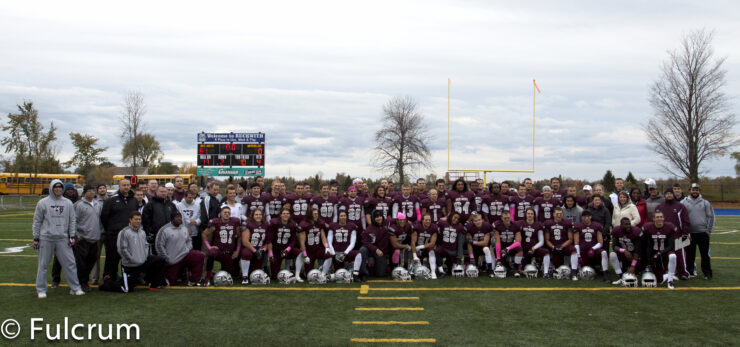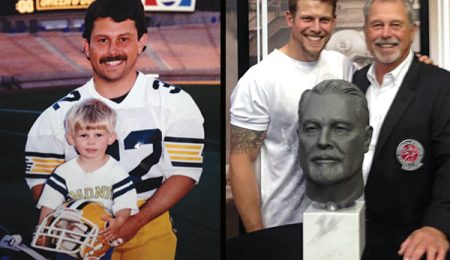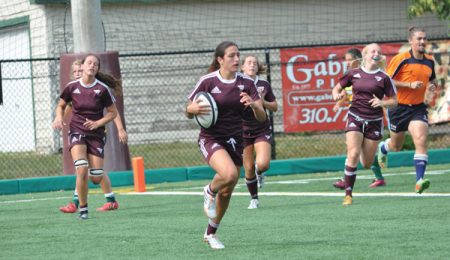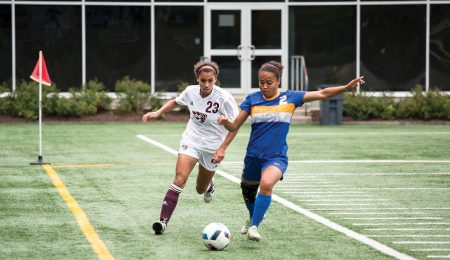Sports Services to give additional funding to select teams
Maclaine Chadwick | Fulcrum Staff
Photo by Justin Labelle
On Oct. 4, University of Ottawa Sports Services announced that it would be launching a national recognition program providing additional monetary support to four varsity teams: men’s football, men’s and women’s basketball, and women’s soccer.
The goal of the varsity recognition program is to increase the national recognition of the university through student-athlete success. The program committee claims this recognition will benefit the university by increasing national visibility and attracting top-quality professors, students, and student-athletes.
But to the committee, national recognition means more than just U of O teams attending Canadian championships or having games broadcast on TV.
“It’s recruiting the best to come to university, but it’s creating that sense of belonging to the university as well,” explained Colin Timm, assistant director of programs for Sports Services. “It goes [right up] to when people speak about the U of O. We want them to say ‘I’m a Gee-Gee,’ ‘I was a Gee-Gee,’ or ‘I want to become a Gee-Gee.’
“We are known as a very strong research-based institution; we are known for some international access,” explained Timm. “This is just another part of university life that we feel is very important.”
The program, headed by Timm, evaluated all varsity teams at the U of O based on a framework developed by a committee of coaches, alumni, and staff. The group considered factors such as provincial and national performance, academic performance, national recognition potential, and revenue generation potential.
“Academics is significant to us, so that’s why it had to be a significant part of the evaluation,” said Timm.
The evaluation took into consideration what percentage of a team are full-time students, whether student-athletes meet the minimum GPA of 6.0 for financial awards, and the number of Academic All-Canadians on each team.
“Our primary mandate here is to get every one of our student-athletes a degree … That’s our job,” said Timm.
Student-athletes who perform well in the classroom are valued by the program because they give sustainability to a team that otherwise may not have consistent success.
“As a university, we really value academics. Other institutions may do it differently, but for us it was a no-brainer,” said Timm.
Varsity teams that were not selected are still eligible for the benefits of the program, but not for another five years—and they will have a lot of catching up to do, according to the report issued by Sports Services. The results of the evaluation reflected an obvious delineation between the four teams chosen and the rest of the varsity program.
“We were interested in seeing if there was a natural separation anywhere,” said Timm. “It just naturally fell out that there was a significant separation between the four programs that we chose [and the others].”
Men’s basketball coach James Derouin is looking forward to the program’s implementation.
“I’m excited and hopeful that this leads to an even greater commitment from the school in terms of performance, and hopefully that is contagious within the community and our alumni,” said Derouin in a press release sent to the Fulcrum. “The university is taking the first steps towards excellence. It’s going to take everyone to take it over the top, but this is the first step, and being selected is an honour.”
Of course, the implementation of the national recognition program has fired up some debate about the status of club teams at the U of O, which receive different levels of support from Sports Services.
“The club program is not a stepping-stone to varsity,” said Timm. “It shouldn’t be viewed that way and that’s not how it’s been created. It’s an opportunity to have access to competitive environments, but it’s really local.”
Timm also squashed concerns that giving additional funds to four particular teams will take away from other varsity, club, intramural, and recreational programming at the U of O.
Fourth-year communications student Julie Vien-Walker has played in intramural sports every semester since her first year at the U of O.
“Intramurals are essential to have,” she said. “As long as the program doesn’t take away from recreational sports here, I’m cool with it.”
According to Timm, that shouldn’t be a concern.
“[The funds] came from our general operating fund,” explained Timm. “Sports Services is an autonomous body; you know we’ve got external revenue that comes in. It didn’t affect current programs, and it didn’t affect recreational programs … it was very clear to us that we cannot reduce service to the other 42,000 students on campus.”
The program, which is currently in the process of setting specific goals for each of the recipient teams, hopes to see improvements in areas like performance and quality of coaching in the near future. By next year, the quality of student-athletes who are on Gee-Gee rosters should be higher, said Timm.
“The level of student-athletes will probably increase, because the opportunities and programs themselves are going to draw the better recruits,” said Timm. “You need the leadership, you need the facilities, but you need the horses.”





